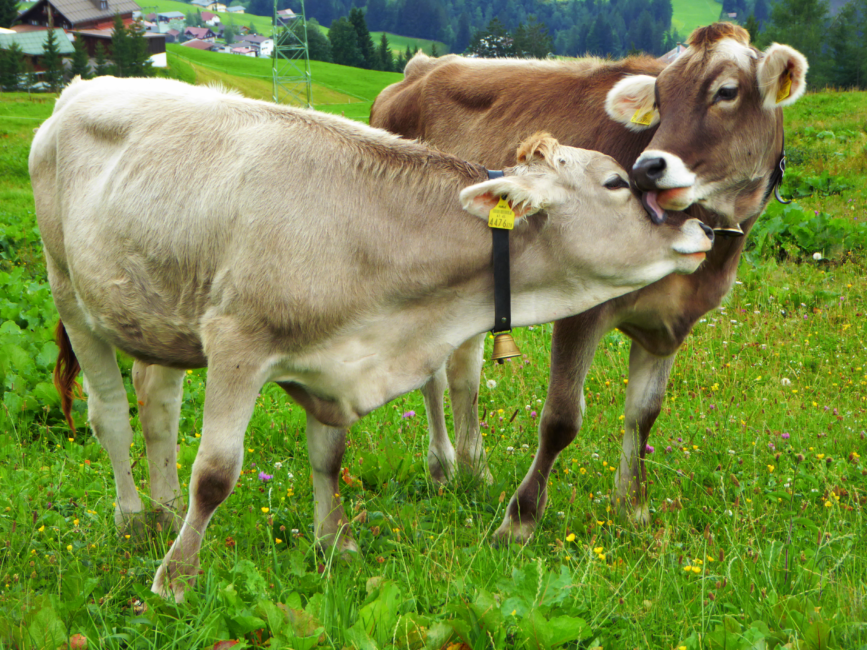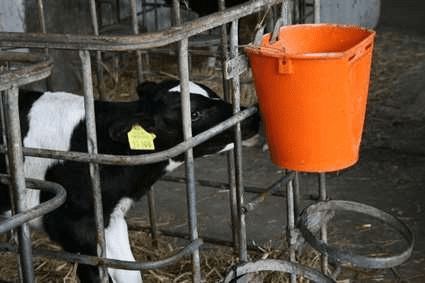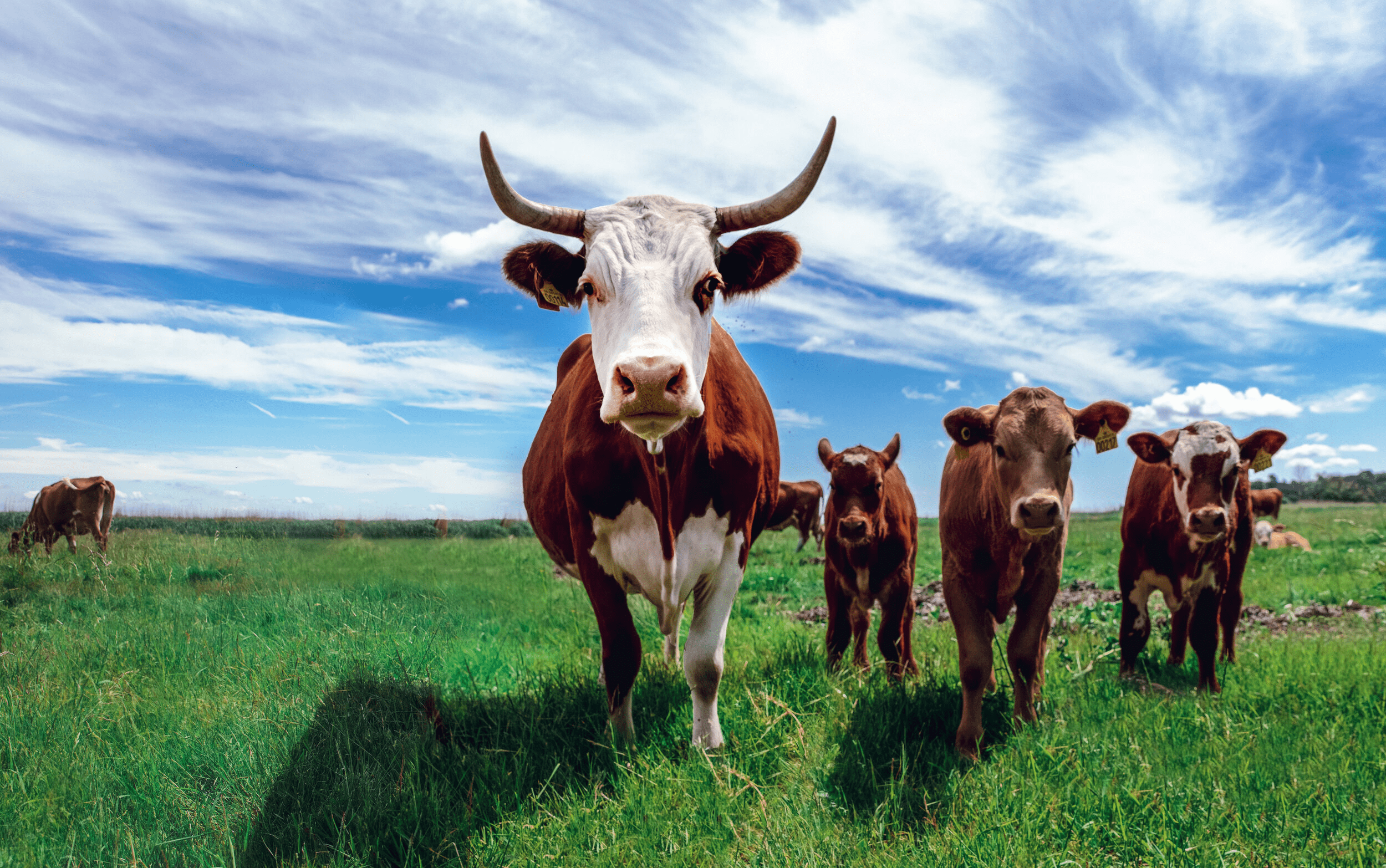The success of any farm animal production lies in the ability to reproduce good quality traits which form the basis for selection and breeding to achieve the objectives of production.
The male as well as the female are important because each of them provides half of the inherited characteristics of the offspring. Therefore, the stockman i.e. the farmer must accord good care for the breeding stock in farm animals.
Management of a Breeding Bull
Breeding bulls are those used to mate the cow or heifer (young female cow). Below are measures for the effective management of breeding bulls:
1. They should be kept alone in a pen to prevent indiscriminate mating.
2. The bull must not be used more than twice a week to prevent being over-used and the frequency drops as the bull ages. A young bull can be used for breeding from two years of age and this is a function of many factors such as good and adequate feeding, health, and general management practices.
3. When used on pasture, a mating ratio of 1:10 is recommended. This means one bull to 10 cows. If this limit is exceeded, it may result in low sperm count – ejaculates.
4. Breeding bulls must be adequately fed with low-quality roughage and very little quantity of concentrates.
5. They must not be over-fed or under-fed. They must not be allowed to put on excess fat. This can be prevented by controlled feeding and allowing the bull to exercise usually on pasture.
6. Exercise is also important for breeding bulls to prevent sluggishness.
7. Breeding bulls must be upstanding with good legs.
8. Hence they must be under the watchful eye of the stockman to ensure that they do not sustain injury on the legs or any part of the body.
9. The hooves must be trimmed regularly to prevent overgrowing, foot rot, or lameness.
Read Also Why Cows Can’t Expel Placenta After Delivery and the Solution
Management of Breeding Cows and Heifer
A cow is a female ruminant that is already being used for breeding while a heifer is that which has not been used at all. Like the bull, the cow must be adequately fed with good quality feed and water in a barn or house. Female cattle are often kept together but separated as the need arises for mating. They must be allowed a lot of exercise.
They must be allowed to graze with the bull to stimulate or help detect the heat period which is the period that female animals are very receptive to their male counterpart. Before this period, the cow can be given feed in the form of concentrate to enhance the conception rate. This act is called flushing. The heat period of a cow lasts for about 17 hours and it repeats itself every 21 days except if pregnant.
When the cow is in heat, it becomes restless, moos, and mounts on one another. The external part of the vulva becomes swollen. It stands and allows the male to ride or attempt to ride other females. The moment the cow is detected to be on heat, mating must be carried out at about twelve hours after to ensure a good conception rate. Detection of heat is now computerized in some dairy farms in developed countries and a dairy farm in Niger State, Nigeria.
Young female ruminant called heifers comes on their first heat at about one year of age. At this point, they must not be used for mating. However, a heifer is ready for breeding from 18 to 21 months of age and can have its first calving at about 30 to 36 months of age.
Mating Systems

Co-habitation between males and females is called mating. In animal production, different mating systems can be used.
1. Natural Mating: This is a mating system where the male is allowed to stay with the female and mate without assistance or interference from the attendant or the stockman.
2. Controlled Mating: This is a mating system where particular bulls are assigned to mate with particular cows in a pen or an enclosure. This system is used where breeding records are important and are taken. There are two types of controlled mating namely; synchronization and artificial insemination (AI).
4. Synchronization: In this type of controlled mating system, the oestrus of the cow is synchronized such that all come on heat about the same time. In this situation, synthetic sex hormones such as estrogen which comes under different trade names are either injected or implanted either through the vagina or the ear of the cow or heifer.
This causes the animals to come on heat about the same time hence they could be mated either by the use of artificial insemination or a bull at the same time. The advantage is that it allows for easy management of the cows and their offspring especially if there is a loss of dam at calving hence the calf could be fostered.
5. Artificial Insemination: This is also another form of controlled mating. This is the process of collecting semen with living sperm from a proven bull using a dummy female or vagina and the timely introduction of the same to the reproductive tract of a ready female. This is only practiced on some government farms in Nigeria. The main problem with the system is that of heat detection. However, the system has the advantage of preventing disease and also overcoming time and space problems.
Read Also Nutrient Requirements and Feeding of Ruminants
Management of Pregnant Cow
The gestation period in cows is 272 to 292 days with an average of 283 days. Immediately the cow holds on to service i.e. becomes pregnant, it must be separated if it is a farm where separate pens are available for pregnant or in-cows.
Otherwise, it must be kept under the watchful eye of the attendant to prevent fighting or any action that can lead to abortion. The cow is confirmed to be pregnant if it does not return to oestrus and when introduced to a male it will refuse mounting. Other means of detecting and confirming pregnancy include:
1. Rectal palpation could be carried out at about the fifth week after mating through the genital organ of the cow. The trained technician or a veterinarian wears a glove and inserts his/her hand into the genitals through the rectum of the cow and gently palpates or feels the development of the fetus.
2. Hormonal changes in the animal system can also be monitored.
3. Observation of the physical behavioral changes of the cow as it begins to undergo conformational changes around the belly and loin area.
Adequate feeding, good health care, and gentle handling must be given to the cow in the first trimester of pregnancy to prevent abortion. A good combination of good quality succulent grass and legumes must be provided with a substantial supply of water.
The slippery floor must be avoided to prevent falling and dislocation. Draught must not be allowed in the stall or pen and adequate ventilation ensured. Pregnant cows must not be allowed to walk long distances to prevent stress that may lead to abortion. Towards parturition, the in-cow must be well monitored. A maternity pen must be washed, disinfected well-bedded must be prepared for calving.
Parturition or Calving in Cattle
At about the 272 days of pregnancy, an in-cow is ready to calve. It must be taken to the calving or maternity pen a few days before to end of pregnancy which can be calculated from the records kept by the stockman.
If calving must be done on pasture, a clean, quite secluded place must be prepared for it while the stockman watches, in case assistance is required. Towards calving, the udder becomes bigger, the vulva also swells and the ligaments around the tail head drop.
Hormones such as oxytocin are released which helps in the contraction of the uterus. The amniotic fluid is released and the animal pushes for the fetus to be expelled. Normally, the fetus comes out with the head laid over the forelegs for ease of passage.
After this, the placenta is expelled and buried. The cow must not be allowed to eat it. If the placenta does not come out between 5 to 8 hours of calving or the fetus comes with the wrong presentation, the assistance of a veterinarian must be sought.
In this part of the world, the cow licks the calf immediately after calving to stimulate the lungs to respiratory action; whereas in the advanced world, this trait has been bred out from the animals.
The cow must be cleaned up by washing the vulva and the calf separated from the mother where such facilities exist as in dairy farms or the calf is allowed to run with the dam. Soon after birth, calves must be identified by tagging, tattooing, branding, or ear notching.
Management of Calf after Parturition

After parturition, the calf may be reared on two basic systems namely; natural and artificial rearing. Under natural rearing, the calf is allowed to run with the dam thereby having unlimited access to the mother’s milk. This is called a cow and calf system or single suckling system.
If the dam has a foster calf, it is called the nurse-cow method or multiple suckling. In this situation, the calf stays with the dam for not less than a period of about six months or about 9 months in some traditional systems. Calves reared this way are always very strong and grow more rapidly.
The calf should be fed or allowed to suckle the first milk of the mother for about four to five days after parturition. This milk is called colostrum. The first milk or colostrum is of importance because it helps transfer immunity of the mother to the calf at birth.
Under artificial rearing, the calf is fed on milk replacers while the calf is allowed restricted access to the milk of the dam. Usually, the calf is bucket-fed the milk or through a nipple drinker. The calf must be trained for this.
At about the third week of life, the calf is introduced to solid food and good-quality forage. The rule of maintaining good hygiene is very essential in this method. Calves reared under this system are usually kept indoors until about six months of age before turning them to pasture.
Artificial rearing of calves is mostly practiced in dairy cattle production while natural one is popular with beef cattle production. Calves must also be debudded and unwanted males castrated. Calves should be completely weaned from a liquid diet from the 16th week of life.
in summary, the success of any cattle production is hinged on the ability to manage and select good breeding stock. Bulls must not be used for breeding before two years of age but be adequately fed and not over-fed to the extent of becoming fat.
Legs must be adequately taken care of. Breeding bulls must have a lot of exercise and each must not be mated with more than ten females or heifer must be watched for their heat period and mated 12 hours after. Heifer must not be used for breeding before the age of 18 months.
They must be well attended to during calvingDifferent mating systems such as natural mating, controlled mating, and artificial insemination could be used. Calves could be reared under natural or artificial systems.
Rea Also Benefits of Biotechnology Application to Agriculture

